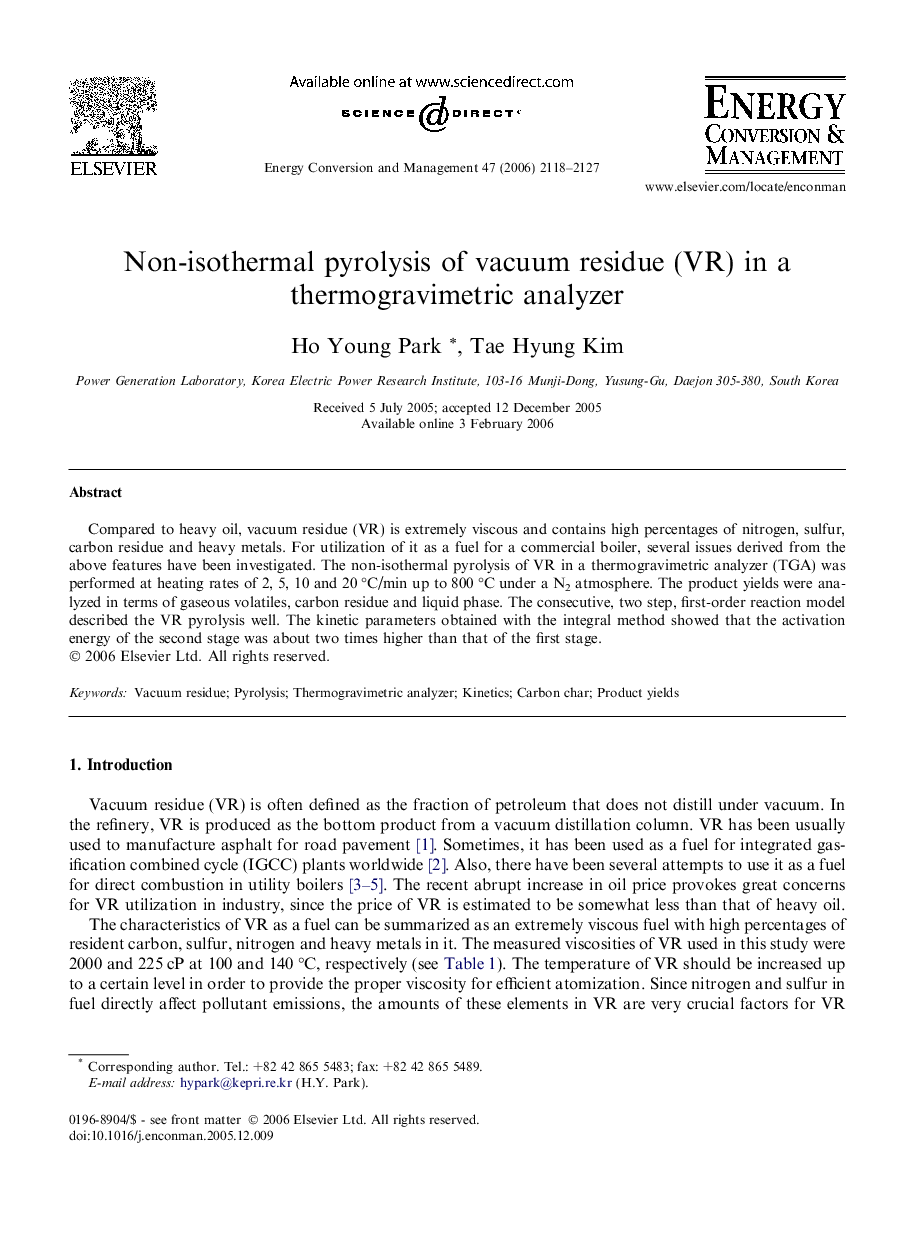| Article ID | Journal | Published Year | Pages | File Type |
|---|---|---|---|---|
| 773068 | Energy Conversion and Management | 2006 | 10 Pages |
Compared to heavy oil, vacuum residue (VR) is extremely viscous and contains high percentages of nitrogen, sulfur, carbon residue and heavy metals. For utilization of it as a fuel for a commercial boiler, several issues derived from the above features have been investigated. The non-isothermal pyrolysis of VR in a thermogravimetric analyzer (TGA) was performed at heating rates of 2, 5, 10 and 20 °C/min up to 800 °C under a N2 atmosphere. The product yields were analyzed in terms of gaseous volatiles, carbon residue and liquid phase. The consecutive, two step, first-order reaction model described the VR pyrolysis well. The kinetic parameters obtained with the integral method showed that the activation energy of the second stage was about two times higher than that of the first stage.
